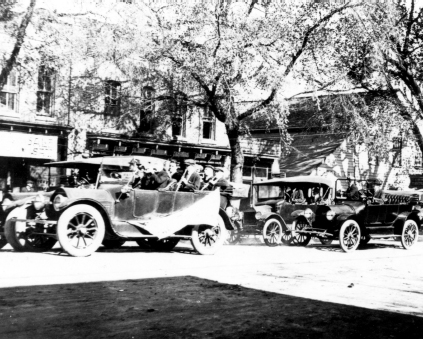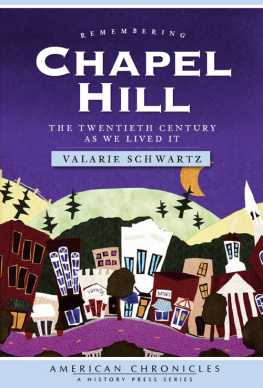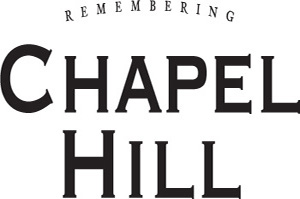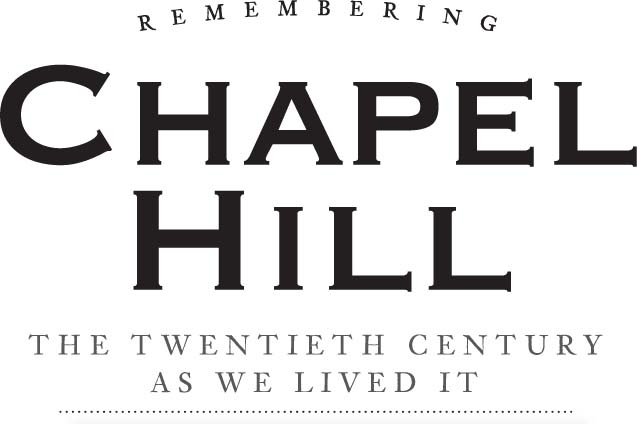V A L A R I E S C H W A R T Z
Published by The History Press
Charleston, SC 29403
www.historypress.net
Copyright 2009 by Valarie Schwartz
Front cover image: Work by Chapel Hill tapestry artist Elaine O'Neil (www.elaineoneil.com).
Back cover image: Map by Mary C. Dirnberger, UNC class of 1929, drawn in 1933.
All rights reserved
First published 2009
e-book edition 2011
Manufactured in the United States
ISBN 978.1.61423.016.8
Library of Congress Cataloging-in-Publication Data
Schwartz, Valarie.
Remembering Chapel Hill : the twentieth century as we lived it / Valarie Schwartz.
p. cm.
Includes bibliographical references.
print edition: ISBN 978-1-59629-704-3
1. Chapel Hill (N.C.)--History--20th century. 2. Chapel Hill (N.C.)--Biography. I. Title.
F264.C38S39 2009
975.6565--dc22
2009021530
Notice: The information in this book is true and complete to the best of our knowledge. It is offered without guarantee on the part of the author or The History Press. The author and The History Press disclaim all liability in connection with the use of this book.
All rights reserved. No part of this book may be reproduced or transmitted in any form whatsoever without prior written permission from the publisher except in the case of brief quotations embodied in critical articles and reviews.
C ONTENTS
P REFACE
In my mind I'm goin to Carolina
Can't you see the sunshine?
Can't you just feel the moonshine?
Ain't it just like a friend of mine
To hit me from behind.
Yes, I'm goin to Carolina in my mind.
T he words of James Taylor's Carolina in My Mind, above, and the power of the University of North Carolina (UNC) Tar Heels on the basketball court may be the first associations that some people have with Chapel Hill, but the true spirit, as with any town, lives within its people. Transient as any college town, many people stay long enough to acquire the degree they seek and then leave; others come for various reasons and find it difficult to leave. Others still, sometimes natives, leave an indelible mark before moving forward in their lives, as with James Taylor, who spent his childhood and developed his musical talent here; Kay Kyser and Andy Griffith, who were educated here; and the young men who enter the basketball program. Remembering Chapel Hill provides a glimpse at the town that grew around the nation's first state-funded university and the ways that some of the people who lived here during the twentieth century affected or were affected by it.
It takes a village to raise more than a child, and even though this book was based on some of the Neighbors columns I wrote for the Chapel Hill News, it would not have been furthered without the village mentality of generosity and caring that remains strong and proud in Chapel Hill. Everyone approached for historic photos or information had something to offer, if only the name of another person to ask. Leads and encouragement were not only invaluable, but also great, humbling reminders that this book, though it carries my name, is only possible through the generosity of those willing to open their homes, hearts and memories in the name of preservation of our history. To everyone mentioned in Remembering Chapel Hill, as well as those along my journey, please accept my deep gratitude (in no particular order): Billy Barnes, Jock Lauterer, Lillian Lee, Roland Giduz, Velma Perry, Esther McCauley, Shirley Van Clay, Glenda Hargraves, Peter Rashkis, Ann Simpson, Tracy Chrismon, James Carpenter, Virginia Taylor, Jeanette Fearington, Richard Hart, Charles Holloway, Cat Williams, Ann Sullivan, Keith Longiotti, Betsey Giduz, Elaine O'Neil, Jennifer Pendergast, Thomas Hughes, Ernest Dollar, Traci Davenport, Doug Eyre, Don Evans, Bill Burk, Eleanor Cobb Wiles, Clarence Whitefield, Bitty Holton, Michael Brown, Noreen Ordronneau, Mary Harley Kruter, Bill Burk, Vicky Scott, Joe Nassif, Penny Haith, Susan Riley, Sharon Campbell, Mary Pringle, Beth Hildebrand, Charles Mack, Steve Scroggs, Kip Gerard, Laurie Norman, Chris Kanoy, Sara Gress and Nerys Levy; and to those who nurtured me and persevered during the process: John, Mary, June, Jonathan, Sally, Kirk, Janine, Jane, Michele, Elaine, Nina, Carmela, my book club neighbors and, finally, Cosmomy constant companion and the only one of many great Chapel Hill dogs to make it into the book.
P A R T I
T HE E ARLY Y EARS
As I saw Franklin Street in 1912 it was a dusty red avenue cut through a forest of magnificent trees. The road dipped through a valley and then rose, but the trees dominated the scene and obscured any buildings that then existed on that section of Franklin Street.
My first impression of Chapel Hill was trees; my last impression is trees.
Robert Burton House, UNC class of 1916; first chancellor, 194557, as he arrived as a student in 1912
C hapel Hill might have forever been lost among the trees and no more than a pretty picnic and hiking spot near a crossroads had it not attracted searchers looking for a place on which to bring forth the University of North Carolina. The United States was in its infancy in 1789 when the North Carolina legislature voted to begin the nation's first state-funded school of higher education. To make it available to all one hundred counties of the formerly Old North State, it needed to be centralized yet far enough away from alluring distractions like, say, Raleigh or Hillsborough, which were the capital and an established county seat, respectively, in central North Carolina at that time. (Durham, which is about twelve miles northeast of Chapel Hill, would not become much more than a small settlement with a train depot until after the Civil War.) Various areas were explored before a chunk of landmostly on a rocky Orange County hill in a settlement known as New Hope Chapel Hillwas identified as ideal. Amid a forest of longleaf and loblolly pines, holly, dogwood, redbud, oaks, maple, shagbark hickory and other evergreen and hardwood trees, a simple, abandoned log chapel stood on that hill, near the site of today's Carolina Inn.

This parade took place about 1910 on East Franklin Street near the intersection with Columbia. Notice the unpaved street and immature trees. Courtesy North Carolina Collection, University of North Carolina Library at Chapel Hill.
During the summer of 1792, a contingent of trustees led by William R. Davie, one of North Carolina's most constructive thinkers at the time, rested on the hill under a robust tulip tree (Liriodendron tulipfera), or yellow poplar. Archibald Henderson, a lifelong resident of Chapel Hill and Kenan professor of mathematics, wrote:
All alumni of the University are familiar with the story that, on a warm summer day, exhausted by their searches for a suitable site, a group of Trustees headed by Davie sat down to rest upon the luxuriant grassy lawn beneath a giant poplar standing near the crest of the ridge popularly known as Chapel Hill. Beneath the poplar's umbrageous limbs the weary Trustees regaled themselves with exhilarating beverages; and after partaking of a picnic lunch and a refreshing nap, they unanimously decided that it was useless to proceed further, the eloquent Davie having convinced them that no more beautiful or suitable spot could be found elsewhere.







